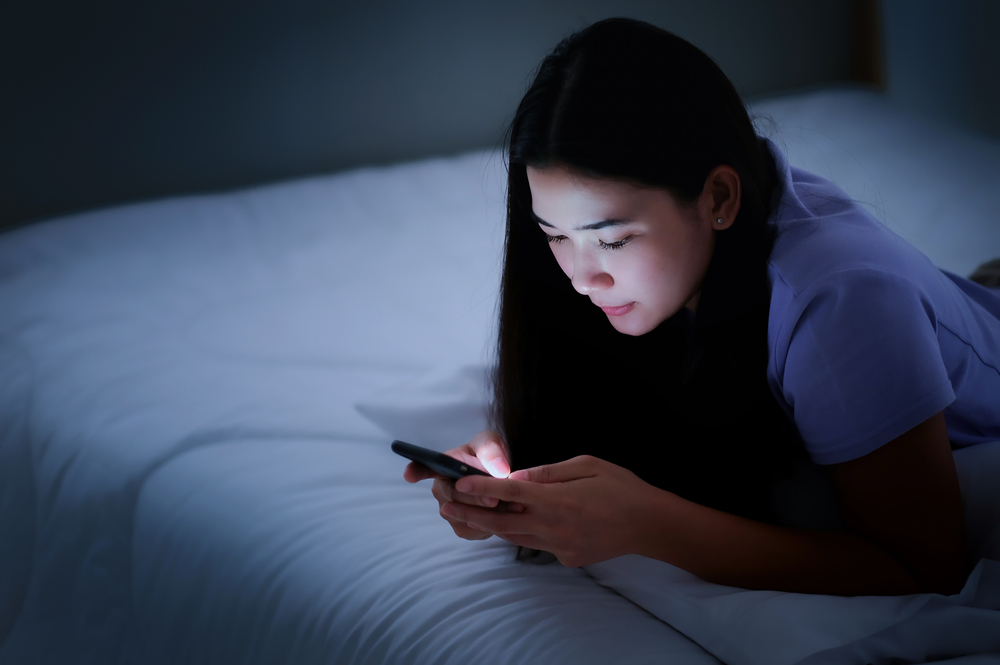Does Blue Light Damage Skin?
Posted on Categories Discover Magazine

When it comes to sunlight’s impact on the skin, people usually think of ultraviolet (UV) light, the invisible light that causes sunburn. However, sunlight also includes the visible light spectrum that the naked eye can see, that is, red, orange, yellow, green, blue, indigo and violet light.
What Does Blue Light Mean?
Blue light is short in wavelength and high in energy. Aside from the sun, it can also come from artificial sources like electronic devices and indoor lighting. “Blue light is what makes the sky blue on a sunny day and what gives your smartphone screen its bright and clear background,” says Susan Massick, a dermatologist at The Ohio State University Wexner Medical Center.
Given that overexposure to UV light causes serious damage like premature aging and skin cancer, it’s important to explore how blue light can affect the skin as well.
Does Blue Light Damage Skin?
Blue light penetrates deeper into the skin than UV rays, but prolonged or repeated exposure to either can lead to photodamage, hyperpigmentation and accelerated skin aging, says Massick.
“It has been shown that blue light can induce the production of free radicals in the skin deep into the dermis,” she adds. “This oxidative stress can lead to DNA damage, leading to the inability to repair skin cells with negative effects on collagen and elastin.”
Most conventional sunscreens will not protect your skin from blue light, so you should consider wearing those with metal oxides, says Cindy Wassef, assistant professor of dermatology at the Rutgers Robert Wood Johnson Medical School.
Broad-spectrum chemical sunscreens provide excellent defense against UV light but do not protect against visible light. Those with hyperpigmentation disorders may benefit from using tinted or mineral sunscreens containing iron, zinc, or titanium dioxide, which provide adequate protection from blue light and prevent further light-induced skin pigmentation.
How is Blue Light Different From Natural Light?
The blue light from the sun and from electronic devices represent the same high-energy visible light, but natural blue light is of much greater magnitude and intensity than artificial blue light, says Massick.
If you were to compare the intensity of the light emitted by electronic devices to the intensity of the sun in the same wavelength of blue light, the former would be so much lower. The sun’s intensity is about 7700 μW/cm2, which is significantly higher than that of a Philips LED television at 78 μW/cm2 or a Dell laptop at 15 μW/cm2.
“Keep in mind that the intensity of blue light from sunlight is exponentially higher than what you may experience from your electronic devices, so blue light from your devices will not affect your skin to the same degree,” says Massick.
The effect of artificial blue light on the skin remains an important area of research though. Natural blue light may be stronger, but people are still consistently exposed to artificial blue light because of the use of electronic devices for work and socializing, says Wassef.
A 2022 Frontiers in Aging study conducted on fruit flies reported that excessive artificial blue light exposure may accelerate aging and affect their level of metabolites. However, there aren’t many studies about its impact on humans.
Since natural blue light exposure is known to cause hyperpigmentation, the authors of a small 2020 study looked into the effect of artificial blue light on the skin. They found that using a high-intensity computer screen at a 20-centimeter distance for eight hours a day during a five-day study period did not worsen melasma lesions.
Read More: How Many Ways Can the Sun Kill Us?
What Does Blue Light Do to Your Skin?
In controlled clinical settings, artificial blue light may even be beneficial for the skin and exhibit antibacterial, antimicrobial and anti-inflammatory properties. The field of blue light therapy is still developing, but it has been used to treat conditions like psoriasis, atopic dermatitis, eczema and acne, so far.
A 2020 Journal of Photochemistry and Photobiology B: Biology study looked into the positive and negative impacts of blue light. The authors found that the duration of exposure and the wavelength parameters play a role in whether blue light from LED can be damaging or beneficial.
In general, artificial blue light is markedly less intense than natural blue light, so its damaging impact is expected to be much lower. More studies are needed, but digital screens might not emit enough blue light to be harmful. Still, less is better when it comes to light exposure, so measures that minimize it can help keep you and your skin healthy, says Massick.
Read More: What Science Says About Blue-Light-Blocking Glasses
How to Protect Skin From Blue Light
If you’re concerned about the potential damage to your skin from blue light caused by electronic devices, Massick suggests decreasing your screen time. This may be challenging because remote work is increasing, but you can also increase the distance between you and your screen, lower the brightness or turn on Night Mode, she adds.
It might be best to minimize screen time at night since the use of blue light emitting from electronic devices can also disrupt the body’s circadian rhythm — the light fools the brain that it’s daytime, making it difficult to fall and remain asleep. Abstaining from screen use may result in better quality sleep than using electronic devices at bedtime with Night Mode.
The impact of artificial blue light exposure on sleep is important to consider because people who sleep seven to nine hours a night have significantly lower intrinsic skin aging scores, according to a 2015 Clinical and Experimental Dermatology study.
Regardless of screen use, Massick recommends you use sunscreen and skin care products with antioxidants to “help combat the oxidative stress of visible light and ultraviolet light on the skin as part of your daily routine.”
Read More: Nobody Panic: Wearing Sunscreen Is Unlikely to Be a Cancer Risk